Search

Physical Activity May Lessen Depression Symptoms
Researchers found that how much sleep you get, how much energy you have, and how much physical activity you do can affect feelings of depression. The findings suggest that physical activity may improve your mood and sleep. Physical activity can help improve your health and quality of life. Not getting enough can increase your risk for some diseases and mental health issues. A research team looked…
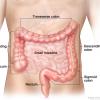
Detecting Colorectal Cancer
Did you know that if colorectal cancer is found early, it may be easier to treat? Many tests are available that can detect colorectal cancer during its early stages. A colonoscopy uses a tool called a colonoscope to see inside your colon. Doctors look for cancer as well as pre-cancerous growths called polyps. They can remove any growths they find during the colonoscopy. This prevents the polyps…
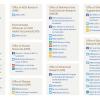
NIH Social Media
Follow NIH on Facebook, Twitter, Instagram, Pinterest, and more! You can also sign up for health newsletters that interest you to keep up with the latest. Or, watch videos and listen to podcasts on our YouTube and iTunes channels.
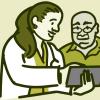
Cancer Care Widens Its Reach
Differences in disease rates across the country are striking. People living in rural areas develop lung cancers more often than those in urban areas. African-American men are twice as likely as white men to die of prostate cancer. Hispanic women have the highest cervical cancer rates. Asian Americans have higher rates of liver cancer than others. These are examples of health disparities:…, Bringing Screening Home, People have a better chance of survival when doctors catch and treat cancer early. That’s why researchers are trying to bring cancer screening tests to people who might have difficulty accessing them. Screening tests are designed to detect conditions before you have symptoms. Carrasquillo and his team are studying different ways to get cervical cancer screenings to women who can’t afford or…, Overcoming Language Barriers, More than 13% of people living in the U.S. were born in another country. Many new immigrants face cultural barriers to health care, including language barriers. These can lead to health disparities. For example, people in certain countries outside the U.S. are at higher risk of getting the hepatitis B virus. Hepatitis B is a blood-borne virus that can cause liver cancer. Early detection and close…, Accessing New Treatments, Clinical trials test how well new medical approaches work in people. But many clinical trials lack participation from diverse populations. People of different races, genders, ages, or from different regions, such as rural areas, can be underrepresented. For example, African-American adults are less likely than white adults to particpate in clinical trials. “If we have studies that don’t include…
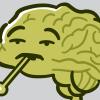
The Inflamed Brain
When you get sick, some germs can attack the brain or the protective lining that surrounds the brain. This can cause swelling and lead to severe illness, or even death. It’s important to recognize the symptoms so you can get medical help as quickly as possible. When the brain swells, it’s called encephalitis. When the lining of the brain, or meninges, becomes inflamed, it’s called meningitis. The…, Haemophilus influenzae, , pneumococcal pneumonia, and meningococcal disease. NIH-funded researchers are looking for other ways to prevent or treat encephalitis and meningitis. Some are studying how to stop germs from infecting the brain or its lining. Nath’s team is testing compounds that may block Zika virus from getting into brain cells grown in the lab. His team hopes that these may block other viruses that are…

Why Tonsillitis Keeps Coming Back
Some kids get tonsillitis, or infected tonsils, again and again. A new study found that strep, a germ that causes tonsillitis, can trick the body’s [qtip:immune system|The system that protects your body from microscopic threats.]. Because of the trick, the body’s immune cells kill each other, rather than the germ. But this only happens in certain people who are vulnerable. Your tonsils are the…
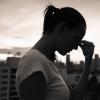
How Much Alcohol Is Too Much?
Do you drink too much at one time, drink too often, or both? Not sure? Many people don’t realize that their drinking habits could be a problem. Find out how risky your drinking is with NIH’s “Rethinking Drinking” interactive website . Perhaps you now spend time drinking instead of doing something else you used to enjoy. Or, maybe being sick from drinking has caused you trouble at work. By…

Mental Health Information
Research is changing our understanding of mental health conditions. Learn about different mental health topics, such as eating disorders, suicide prevention, and traumatic events. Find out how often mental health conditions occur, what the treatment options are, and how to get help for yourself or someone you know.

Mouth Microbes
Do you know what’s in your mouth? It’s home to about 700 species of [qtip:microbes|Microscopic germs like bacteria, fungus, and viruses.]. These include germs like bacteria, fungus, and more. “Everybody has these microbes in their mouth,” says Dr. Robert Palmer, an NIH expert on oral microbes. Some microbes are helpful. Others can cause problems like tooth decay and gum disease. Troubles begin…, Community Growth, Different microbes grow in different places. Some stick to your teeth. Others prefer your tongue. Some lurk in the tiny pockets between tooth and gum. Once they’ve found their homes, they form diverse communities with the other germs. Mouth microbes work together to protect themselves with a slimy, sticky material called a matrix. The matrix in plaque makes it harder to remove it. The communities…, Helpful Neighbors, “Many bacteria in our mouths depend on help from other members of their community to survive and prosper,” says Dr. Floyd Dewhirst, a dental expert who studies microbes at the Forsyth Institute. Because microbes grow in communities, it’s important to understand how both helpful and harmful microbes work. Dewhirst’s team is trying to identify all the different germs living in the mouth and what…, Partners in Decay, An important health problem caused by mouth microbes is early childhood tooth decay. “In the U.S., about 23% of our children between the ages of 1 and 5 are affected by this disease,” says Dr. Hyun (Michel) Koo, a dental researcher and oral health expert at the University of Pennsylvania. Tooth decay can get worse very fast. The microbe matrix and acid from bacteria are thought to be the main…, Busting Plaque, Koo’s team is looking for new ways to fight plaque buildup and tooth decay. They’ve developed tiny substances, called nanoparticles, that are small enough to get inside and destroy the matrix that protects microbes. The nanoparticles can also kill the acid-making bacteria without harming good bacteria in the mouth. Koo’s team has shown that these tiny substances can reduce acid damage to the…
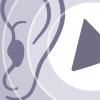
Mingling Senses
What does the color blue taste like? Does guitar music smell sweet or spicy? These questions might sound like nonsense. But for people with a condition called synesthesia, they describe real experiences. We have five senses: touch, sight, taste, sound, and smell. Most people experience their senses one at a time. In synesthesia, one sense can be experienced at the same time as another. For…
NIH Office of Communications and Public Liaison
Health and Science Publications Branch
Building 31, Room 5B52
Bethesda, MD 20892-2094
Contact Us:
nihnewsinhealth@od.nih.gov
Phone: 301-451-8224
Share Our Materials: Reprint our articles and illustrations in your own publication. Our material is not copyrighted. Please acknowledge NIH News in Health as the source and send us a copy.
For more consumer health news and information, visit health.nih.gov.
For wellness toolkits, visit www.nih.gov/wellnesstoolkits.
